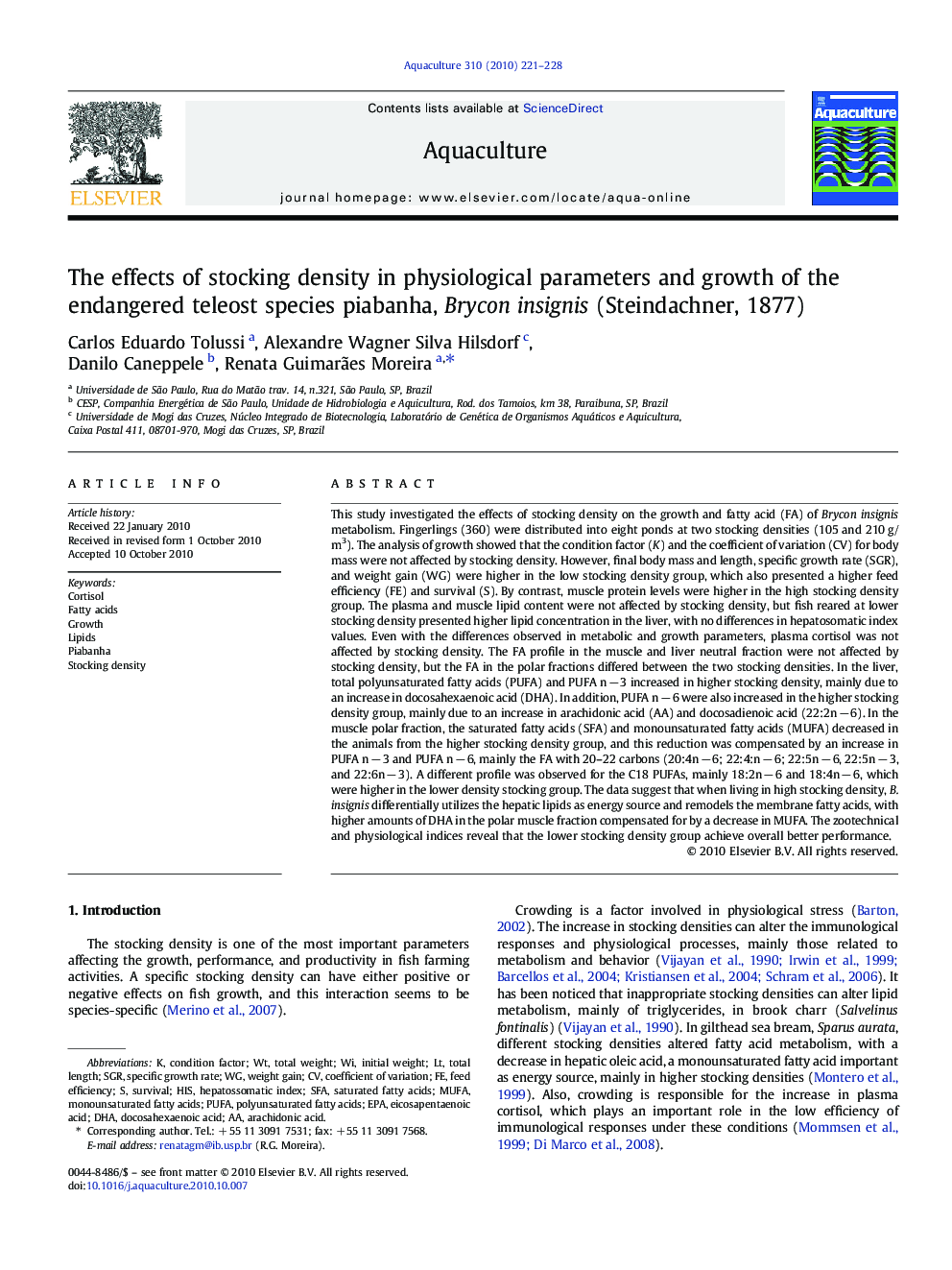| کد مقاله | کد نشریه | سال انتشار | مقاله انگلیسی | نسخه تمام متن |
|---|---|---|---|---|
| 2423437 | 1552916 | 2010 | 8 صفحه PDF | دانلود رایگان |

This study investigated the effects of stocking density on the growth and fatty acid (FA) of Brycon insignis metabolism. Fingerlings (360) were distributed into eight ponds at two stocking densities (105 and 210 g/m3). The analysis of growth showed that the condition factor (K) and the coefficient of variation (CV) for body mass were not affected by stocking density. However, final body mass and length, specific growth rate (SGR), and weight gain (WG) were higher in the low stocking density group, which also presented a higher feed efficiency (FE) and survival (S). By contrast, muscle protein levels were higher in the high stocking density group. The plasma and muscle lipid content were not affected by stocking density, but fish reared at lower stocking density presented higher lipid concentration in the liver, with no differences in hepatosomatic index values. Even with the differences observed in metabolic and growth parameters, plasma cortisol was not affected by stocking density. The FA profile in the muscle and liver neutral fraction were not affected by stocking density, but the FA in the polar fractions differed between the two stocking densities. In the liver, total polyunsaturated fatty acids (PUFA) and PUFA n − 3 increased in higher stocking density, mainly due to an increase in docosahexaenoic acid (DHA). In addition, PUFA n − 6 were also increased in the higher stocking density group, mainly due to an increase in arachidonic acid (AA) and docosadienoic acid (22:2n − 6). In the muscle polar fraction, the saturated fatty acids (SFA) and monounsaturated fatty acids (MUFA) decreased in the animals from the higher stocking density group, and this reduction was compensated by an increase in PUFA n − 3 and PUFA n − 6, mainly the FA with 20–22 carbons (20:4n − 6; 22:4:n − 6; 22:5n − 6, 22:5n − 3, and 22:6n − 3). A different profile was observed for the C18 PUFAs, mainly 18:2n − 6 and 18:4n − 6, which were higher in the lower density stocking group. The data suggest that when living in high stocking density, B. insignis differentially utilizes the hepatic lipids as energy source and remodels the membrane fatty acids, with higher amounts of DHA in the polar muscle fraction compensated for by a decrease in MUFA. The zootechnical and physiological indices reveal that the lower stocking density group achieve overall better performance.
Journal: Aquaculture - Volume 310, Issues 1–2, 22 December 2010, Pages 221–228